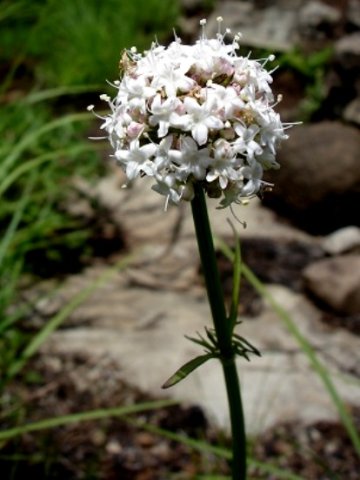Valeriana capensis var. nana

Author: Ivan Lätti
Photographer: Judd Kirkel Welwitch
Valeriana capensis var. nana, one of three varieties of the species called Cape valerian and in Afrikaans wildebalderjan (some boisterous character called Jan), is a robust perennial growing from thin rhizomes to heights around 1,2 m. The stems are long, erect and ribbed. The plant has an unpleasant odour, more so when dry.
It produces mostly basal, branched rosettes of usually compound, hairy leaves comprising ovate leaflets near the ground. The terminal leaflet is larger. A node with variable, narrow, composite leaves can be seen below the inflorescence.
The variety distribution is in the far north to northeast of the Eastern Cape and the west of KwaZulu-Natal, in the Drakensberg, as well as in the Maluti Mountains of Lesotho.
The habitat is high elevation, moist, montane grassland. The habitat population is deemed of least concern early in the twenty first century.
V. capensis, in the guise of three varieties is the only species of this genus found naturally in southern Africa, growing in the Drakensberg. Var. capensis is widespread along the south and east, across a range from the Western Cape to Limpopo and beyond, as far as Kenya.
There are about 500 species of Valeriana worldwide, mainly distributed in the northern hemisphere, but also in Brazil. V. officinalis, a European plant that is known as a source of heart medicine, resembles this plant, apart from its small terminal leaflets. The roots of V. capensis have been used widely in traditional medicine in South Africa (Van Wyk and Gericke, 2000; Pooley, 1998; iNaturalist; iSpot; JSTOR; http://redlist.sanbi.org).

